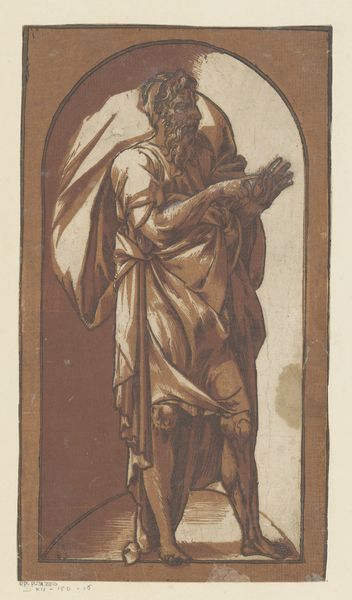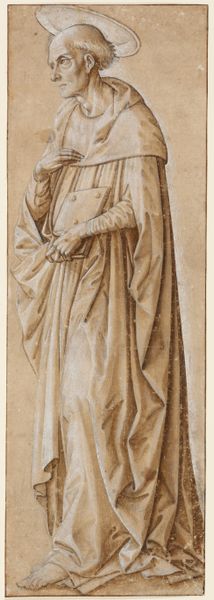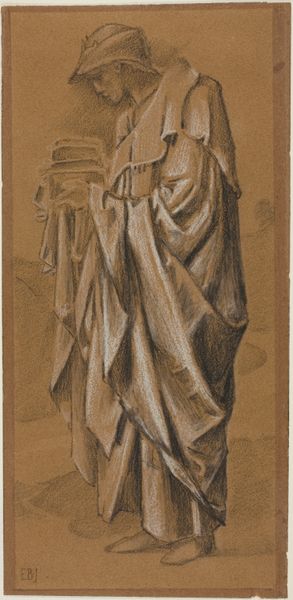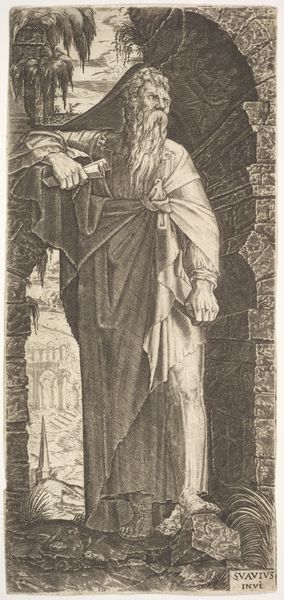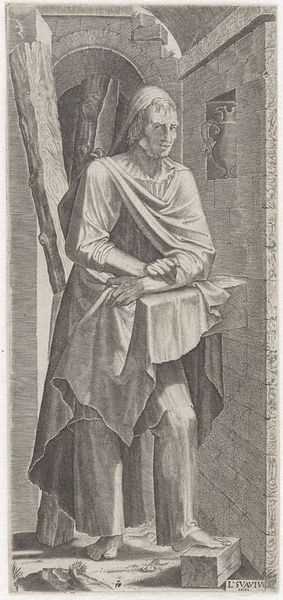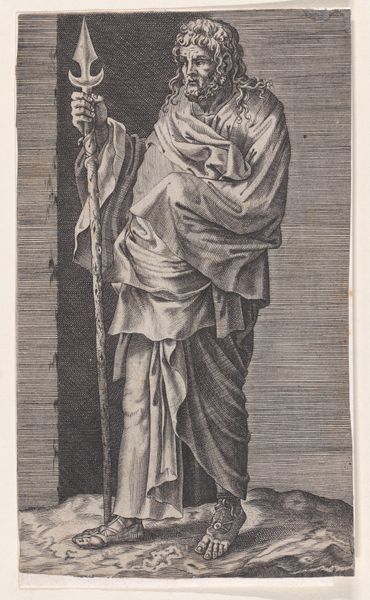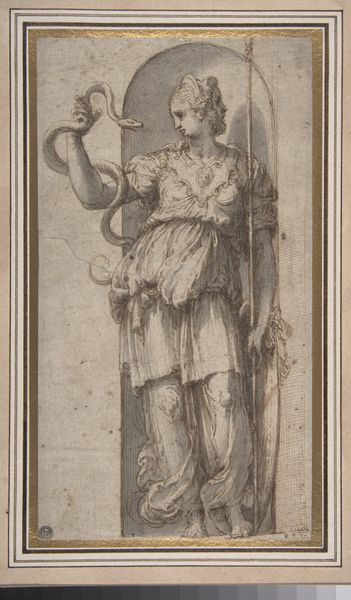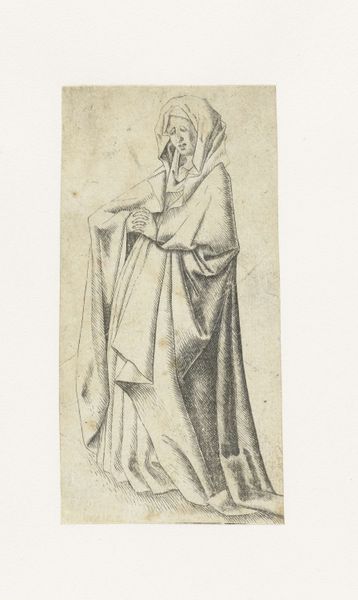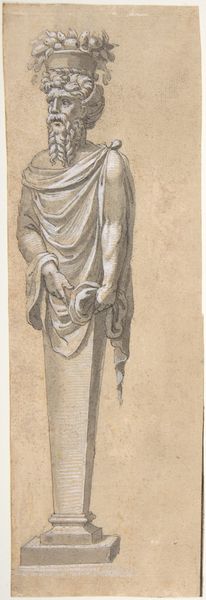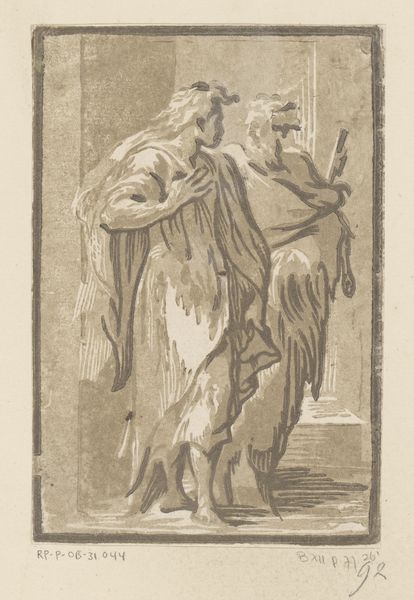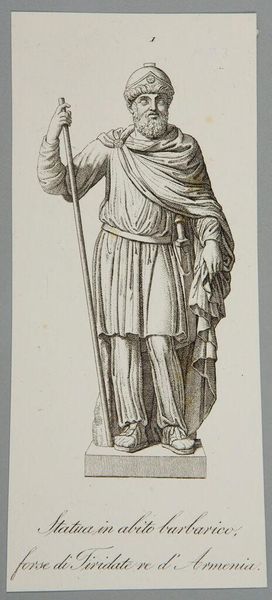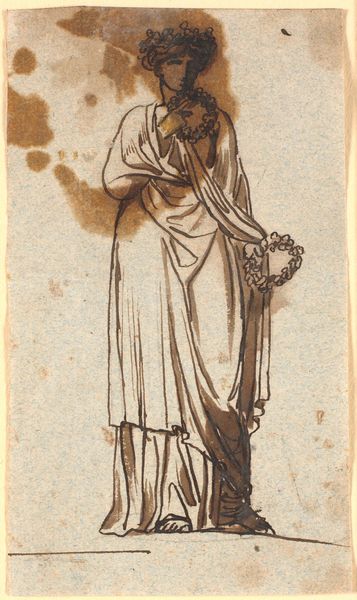
drawing, dry-media
#
portrait
#
drawing
#
medieval
#
figuration
#
dry-media
#
portrait drawing
#
history-painting
Dimensions: height 215 mm, width 101 mm
Copyright: Rijks Museum: Open Domain
Editor: This is "Heilige Lodewijk," a drawing made sometime between 1580 and 1620, currently housed at the Rijksmuseum. The artist is anonymous, and it seems to be made with dry media on paper. The figure has a kind of serene, almost detached quality. What do you see in this piece? Curator: I see a work steeped in the complexities of power and representation. Let’s consider who Saint Louis was – a king, a symbol of divine right, and a figure deeply implicated in the social hierarchies of his time. The way he's depicted, almost like a statue, speaks to an era grappling with the idealization of leadership and the reinforcement of social order. How does that resonate with you? Editor: It's interesting. I was just thinking about him as a sort of archetypal king, not necessarily his specific role in those social hierarchies. It felt more... distant, removed from direct power dynamics. Curator: Exactly, that distance is key. Consider the implications of idealizing historical figures, particularly monarchs. How does this portrayal contribute to a specific narrative of kingship? The detached quality could be read not just as serenity, but as an assertion of authority that transcends everyday concerns, distancing him from the struggles of the populace. How might this representation have functioned in its own time? Editor: So, it’s not just a portrait of a saint, but an active statement about power and social roles. I hadn’t really considered the effect of that idealization. Curator: Precisely. Art like this reflects and reinforces social values. What do you make of its continued display in a museum context today? Editor: I guess seeing it here, in the Rijksmuseum, invites us to think critically about that history. It’s not just admiring the artistic skill, but engaging with the legacy of power that it represents. Curator: Absolutely. And by interrogating these representations, we can better understand the ongoing dialogues between art, history, and social justice.
Comments
No comments
Be the first to comment and join the conversation on the ultimate creative platform.
